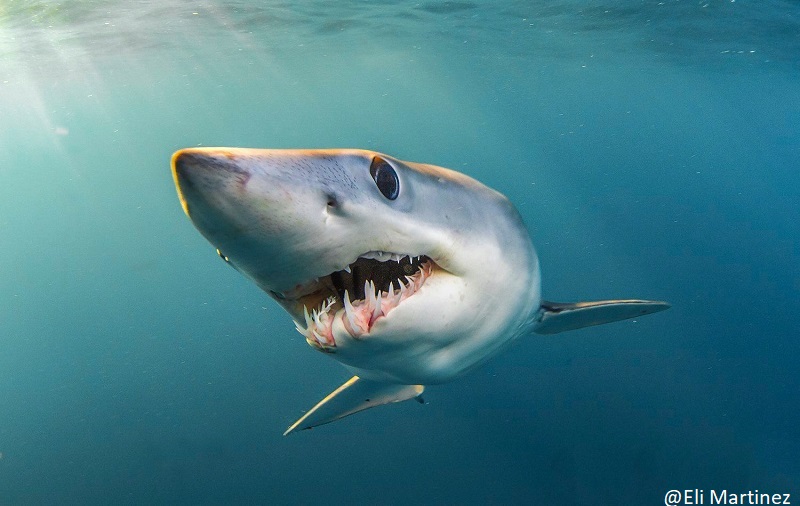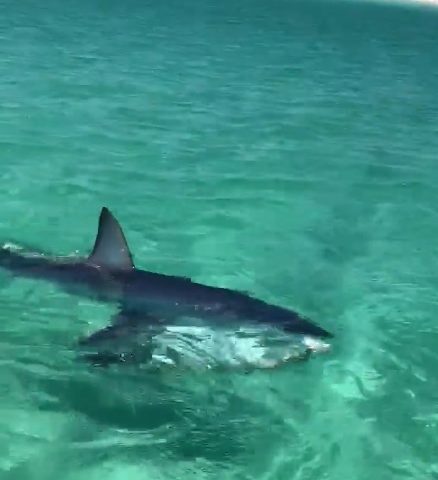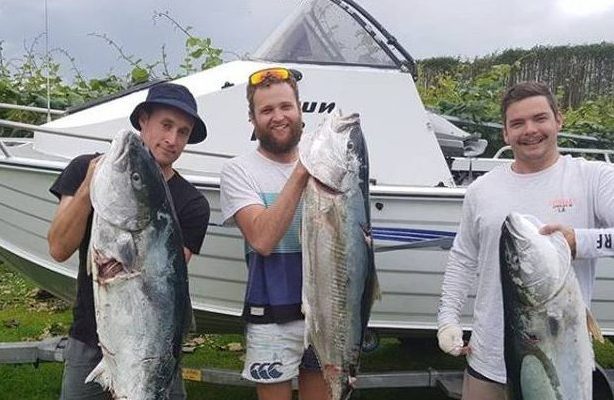Estimated reading time: 8 minutes
We begin Ocean Safari: Freediving with Mako Sharks part two as the crew begins calling: “Shark!”
Finally, a shark has picked up the trail and is close to the boat. But what kind of shark?
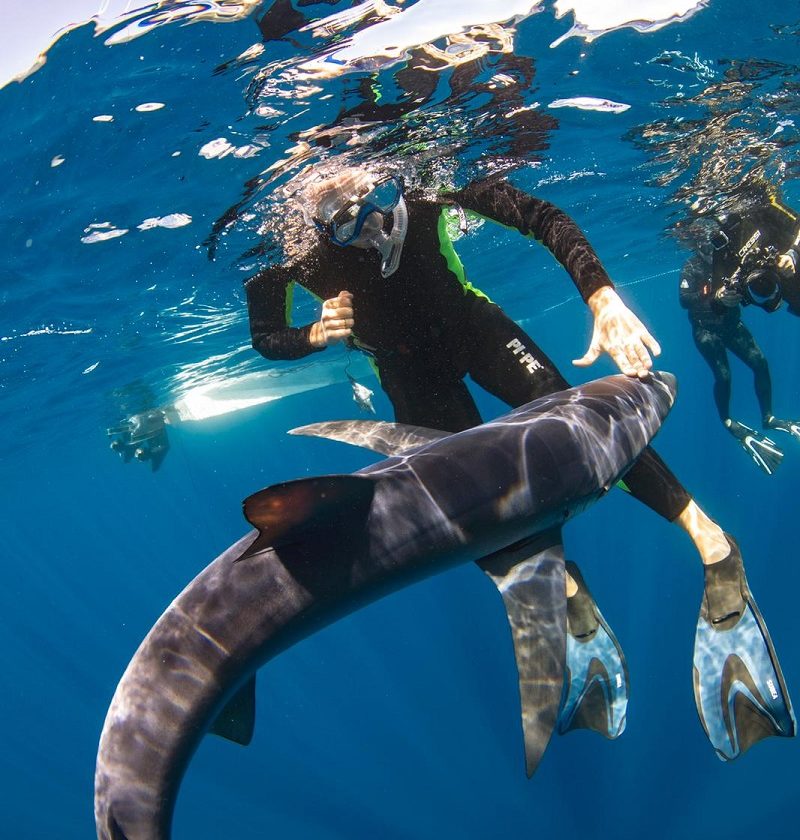
“Silky,” says Mathias. Aha, a silky shark, about two meters (6ft) long. Really? This is not the season for silkies. It doesn’t matter, we’ll have our gear and cameras ready in no time. Fernanda is the first to jump into the water to check the situation. How does the shark react? Is he excited, maybe even aggressive? But our safety diver signals okay to us, everything is fine, we can follow.
The silky shark is a species that, along with the blue shark and the oceanic whitetip shark, is one of the most common shark species in the ocean. These sharks must also be considered a potentially dangerous species for humans. The skin appears soft and silky due to small and fine scales. Toward the belly it is very light or even white.
After we’re all in the water, everyone finds a good position on the bait box rope. (It’s not easy to hold on with one hand and take good photos with the other hand.) Fernanda wants us to stay together as a group for security reasons. This means that we shouldn’t move farther away from the boat than the rope is about 10 meters (32ft) long. However, since the current is not that strong, we can let go of the rope and snorkel a little more freely with the shark.
The silky shark is very curious, circling us but also keeping a respectful distance. He never comes closer than one meter (3ft). They appear in large schools, but here he is, the only shark. After 45 minutes he has lost interest in us and disappears into the blue depths of the Pacific. A nice encounter.
Unfortunately, it is the only shark that shows up that day. At least while we’re in the water. Because Just as we are about to head back to shore, we spot a smooth hammerhead shark curiously approaching our bait. This is also an unusual sighting for the time of year in early February. At almost 1.50 meters(5ft), the hammerhead shark is still a young animal and very skittish. Even before we have stopped the engines and put on our neoprene suits, he disappears again.
But a short time later, he appears again and follows our boat. At least that’s a sign that our baits are not entirely uninteresting.
Back in port we discuss the excursion. Sure, the silky shark was great, but only one shark in seven hours that we could dive with? Even though we dumped liters of blood and bait into the sea? We are a bit disappointed, as we expected mainly mako and blue sharks.
The next two days will be even more disappointing because there are no sharks at all. Funny. Are the many fishing boats to blame? Possible. But it also proves that we are not in a safari park where the animals are already waiting for you, and sharks aren’t bloodthirsty monsters who swoop in because there’s baitfish in the water.
Day 4 arrives and after three hours of chumming, Chris from Florida decides to just jump in the sea. With his snorkel gear he circles our boat several times when we suddenly see a fountain shooting out of the water on the other side: a humpback whale has surfaced barely 20 meters (65ft) away.
“Chris, Chris! Quick, look at the other side!” we yell at our buddy. With a few powerful fin kicks, he swims to the stern of the boat and just sees the whale dive down right in front of him!
“Woo-hoo”, we hear from Chris, and he puts his thumb up in the air. Now the fire is on. “Baitball—Marlin!” Chris calls out to us.
A small school of sardines has gathered about 30 meters (98ft) below our boat and a marlin is chasing them. We jump into the water, one after the other. I look down and see the animal, a striped marlin, about eight feet tall. He shoots around the baitball and slashes at the sardines with his sword. This one weighs maybe 50kg (110lbs.), but in April three years ago a 370kg (815lbs.) marlin was caught here, Fernanda tells me later.
After five more minutes, when we have just said goodbye to the marlin, we hear the call that we have been missing for so long: “Shark!” Mathias shouts. And then: “Blue . . . 6 feet.” So a young blue shark, almost 1.80 meters long slowly comes toward me. I dive under him and see his clasper, a male.
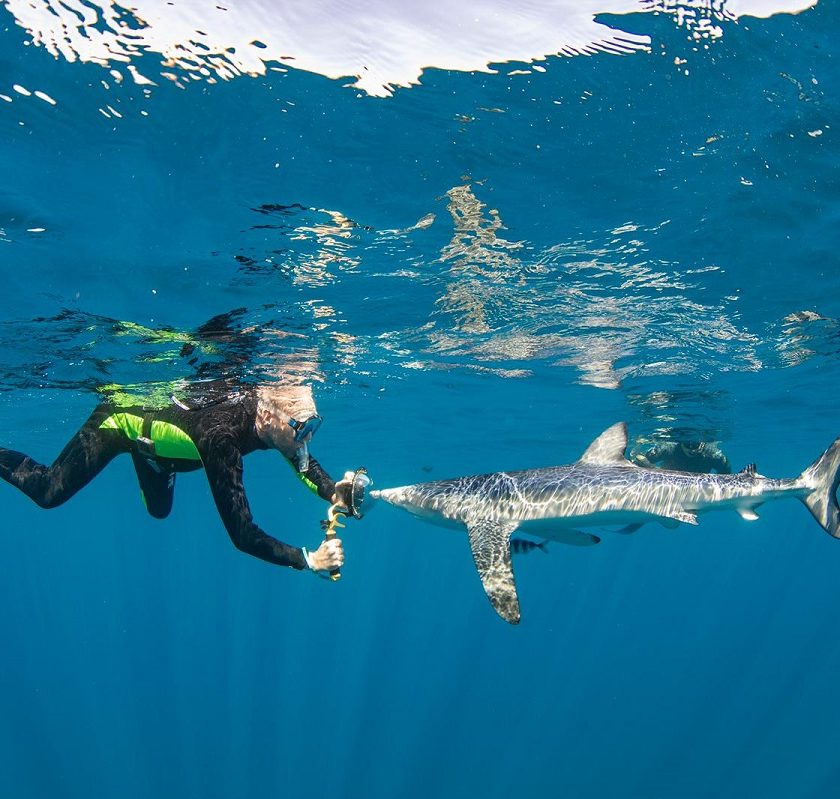
The shark rotates and clearly shows interest in my camera. It bumps against it with its snout, and I must push it down with my hand more than once. The blue shark is not at all shy and swims up to everyone in the group, resulting in great photo opportunities. A real “player.” That’s what sharks that are comfortable around humans are called.
The shark seems to be particularly interested in Itai, our diving buddy from Israel and the shark snaps at the diver’s shoulder and head several times. Whether it’s his yellow and black wetsuit or something else, we can only speculate.
But Itai is on guard and can keep the shark at a distance. For an hour we share the water with the elegant animal.
The marlin is long gone, but now I see a mobula ray swimming beneath us. Just a short visit, but very impressive, nonetheless. On the way back we see two mahi-mahi circling around our boat, a pod of dolphins, and a large sea turtle say hello. Wow, today we really had an ocean safari!
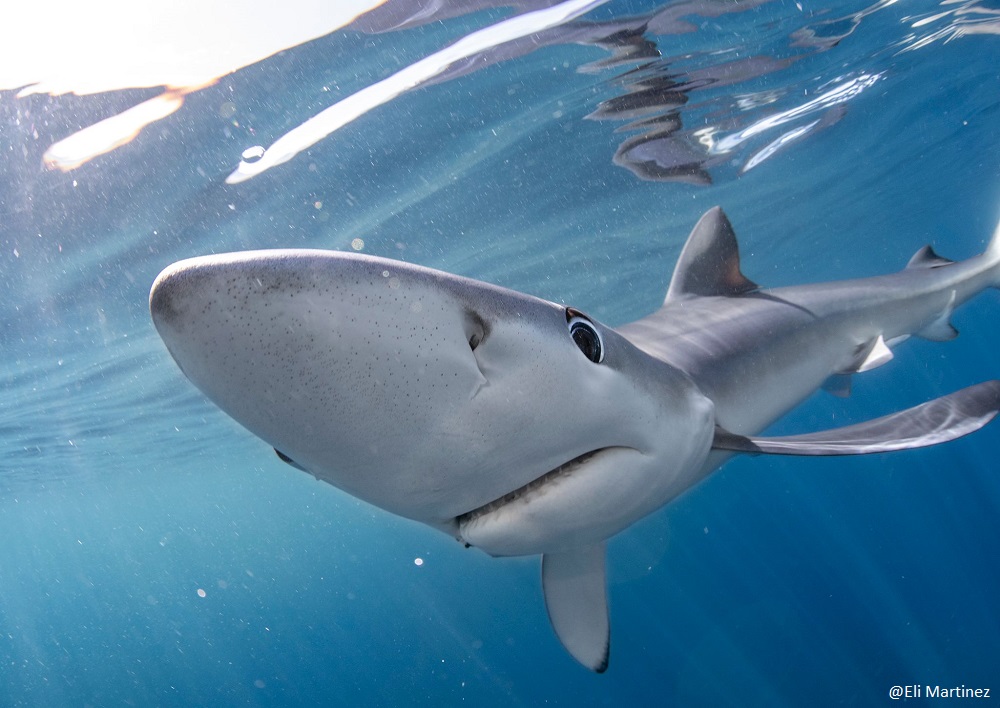
The fifth day is almost a copy of the day before. At the harbor exit we see a baby humpback whale and the obligatory dolphins accompany us for a while. Again, we must wait three hours for the real action to start. But then a blue shark appears at the boat and is very interested in our bait. Maybe it’s the same one as yesterday?
We excitedly put on our gear and jump into the water. With pelagic shark species you are in a hurry to get in; you just never know how long the shark will show interest. Luckily, the shark stays with us for the next hour and a half and is not shy. at all.
In the water we see it’s a female and a bit smaller than the shark from the day before, but just as curious. She seems to be in a flirty mood because she kisses all our dome ports, and It keeps chasing our hanging baits and swims around all of us.
This a confident shark lady who gives us many opportunities to spend time with her and take beautiful pictures that everyone can be happy with.
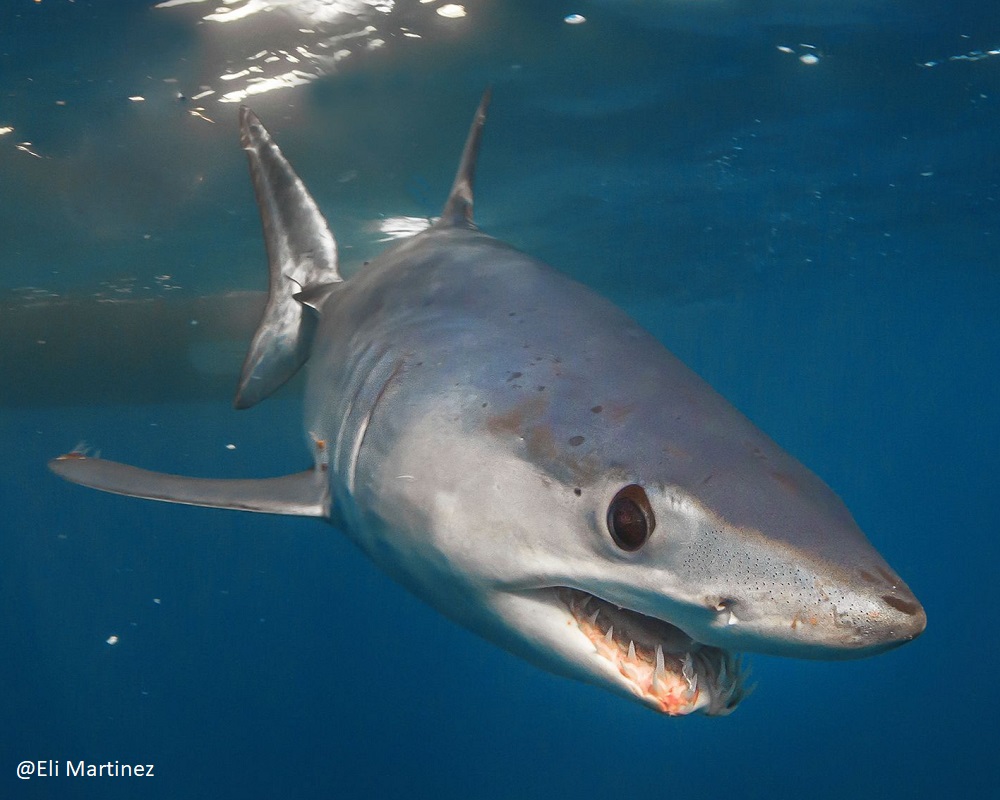
And then, just as we were no longer believing it will happen, the highlight: a mako appears on the scene! We don’t see him coming; suddenly he’s just there. And Fernanda hasn’t promised too much, in fact he’s acting like the Tasmanian devil on Bugs Bunny. He’s fast, hectic, and shoots around us.
The blue sharks are elegant gliders; the mako is a jet fighter. Here and there we catch a glimpse of his teeth like Jack Nicholson’s killer smile. It’s a strange feeling when jaws full of teeth come at you.
But he is not aggressive, rather the mako seems to want to analyze everything as quickly as possible. And As quickly as he appeared, he’s gone again. He didn’t even allow us 10 minutes, but we were able to catch 2 to 3 good photos of him.
A day like today is the stuff of diver dreams and why I love wildlife adventures.
It doesn’t matter that we leave completely empty-handed again on the sixth day…
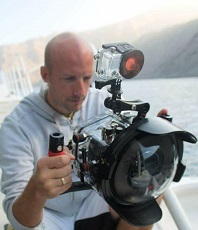
Christian Kemper is a TV journalist from Germany and freelance writer for three of the biggest diving magazines in Germany. He has been diving with and studying sharks for more than 20 years. The author has written two books about shark attacks and published his first English language book about sharks titled “The Fear Beneath.”
